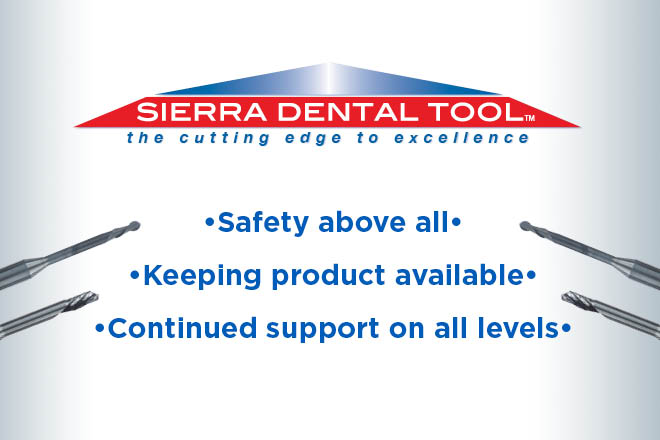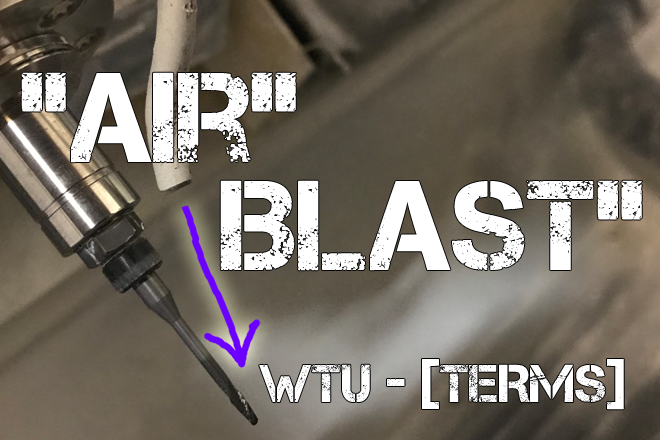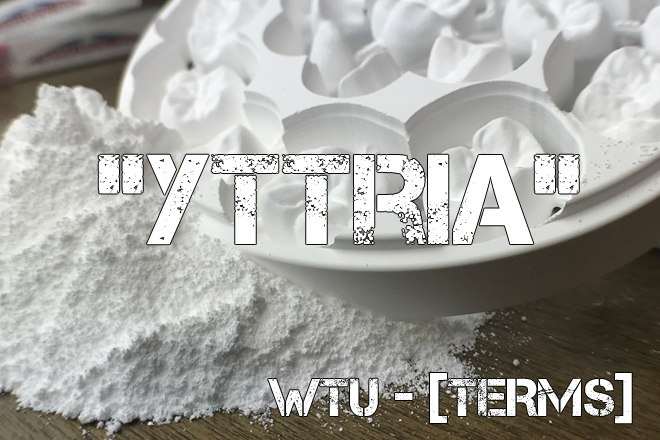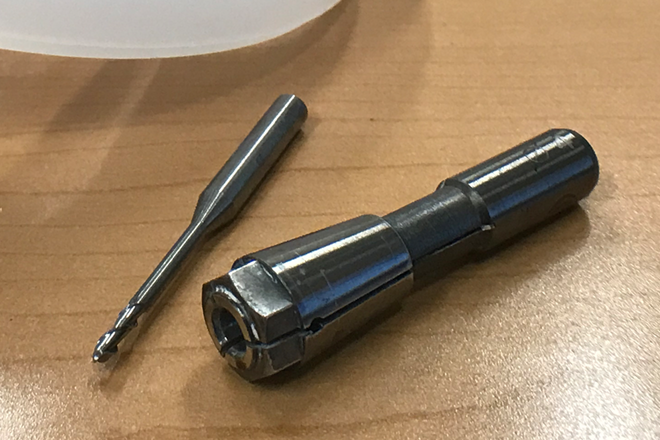Now available on demand! Greg Everett, Vice President of Operations, Sierra Dental Tool explores the role of milling…
Posted by Zahn Dental on Wednesday, May 13, 2020
Now available on demand! Greg Everett, Vice President of Operations, Sierra Dental Tool explores the role of milling…
Posted by Zahn Dental on Wednesday, May 13, 2020
In this session, Nick Alonge interviews a highly regarded digital dental technician, Pam Hanneman CDT. They discuss in-depth, their top tips for sintering zirconia and maintenance of ovens.
In this webinar, WeTeamUp’s Greg Everett and Nick Alonge joined DGShape America’s Fernando Catania and Portal Digital Dentistry to discuss how to get a consistent and predictable outcome from CAD to CAM.
Posted by DGSHAPE Americas on Tuesday, April 21, 2020
In case you missed the live broadcast, check out the recording of the recent round table discussion we had with our friends over at CimSytstem!
“During this session, we cover some of the common support issues that come up in Dental CAD/CAM and some of the best ways to narrow down and solve them. We’ll also be discussing some key tools that are already available in MillBox that can help with common issues as well as upcoming updates that will make your MillBox CAM more flexible.”
An efficient team runs on a chain of: digital production, correct tools and materials, maintained equipment, good communication, and time management. What does each of these mean for you? Check out the latest #webinar featuring Nick Alonge and Greg Everett as they discuss balancing cost and quality in a dental lab.
In unparalleled times like these, uncertainty is the only thing we can count on. The Coronavirus pandemic is at the top of everyone’s mind. We must all do what we can to mitigate the effects both from a health and economic standpoint. The Sierra Team is actively engaged with our partners to provide uninterrupted support you can rely on. 
As supply chains are stressed worldwide Sierra stands by the dental laboratory and is committed to continued support of our industry.
The Sierra Team is proud to be part of this close-knit industry. We are continually impressed with the community atmosphere that makes the dental lab business unique. Moving forward we must continue to work with and help each other.
Thank you for doing your part to keep our community safe as we walk through this moment together.
Sincerely,
Greg Everett
Vice President, Operations
Sierra Dental Tool

[ er blast ]
An air blast is a device that delivers a stream of high-pressure air to the tip of the milling tool while it is cutting. They are widely employed in both industrial and dental grade CNC machines. The purpose of an air blast is to remove debris from the milling tool while it is cutting. It’s very important to move debris away from the tool because it prevents re-cutting of material. A properly set up air blast is essential for efficient milling all dry dental materials.
Milling inherently creates waste debris and it needs to be removed effectively. As a milling tool cuts and creates this waste, it is possible for the waste to stay in the cutting area. If this happens, the material will be re-cut. Re-cutting material creates extra heat, abrasion, and load on the tool. The use of an air blast assures that this effect is minimized.
Issues with air blasts are a leading cause of pre-mature chipping and/or tool failure. If your air is not aimed or pressurized correctly, it won’t work. Your milling machine will still operate, but the extra heat and abrasion is hard on the tool. Without air, the tool is essentially scrubbing its way through the material. This can reduce the life of your tooling and cause non-ideal milling results. If you’re getting margin chipping or your tools aren’t lasting, make sure to check that your air is at the correct pressure and properly aimed.
To a minor degree, air blasts also serve to regulate the temperature of the milling tool as it is working. The cool, dry air removes heat directly from the tool through contact, and indirectly removes heat by evacuating waste material effectively.
The compressed air you feed your milling machine needs to be very clean and dry. Untreated compressed air contains moisture, oils, and particulates. These contaminates can cause adverse effects if they contact your restorations and can also contribute to pre-mature spindle wear. If your air is wet, it can cause certain materials to cake on the milling tool – which also reduces tool life. The investment in good air filtration and drying is certainly well worth it.
Thanks for reading! We hope this break down of the term “Air Blast” has been of value. Stay tuned next week for another post like this!
Check out the growing list of WeTeamUp Terms posts HERE

[ih-tree-uh]
Yttria, otherwise known as Yttrium Oxide (Y2O3) is an additive used in all dental grade zirconia material. It is used to stabilize the zirconia during sintering. As your zirconia restoration is sintered, it experiences a crystalline phase change. As the zirconia undergoes this phase change, it is inherently unstable. Without the addition of yttria, the zirconia we use would not have the properties needed for dental crowns.
Thanks for reading! We hope this break down of the term “Yttria” has been of value. Stay tuned next week for another post like this!
Check out the growing list of WeTeamUp Terms posts HERE

[kol-it] – Noun
The collet is the mechanism that holds the milling tool in the spindle during operation. It transmits the spindle’s power into the tool while keeping it precisely centered under milling loads. In dental milling machines, the collet opens and closes to allow for tool a changes during milling. A properly functioning collet is essential to trouble free dental milling.
A dirty or worn collet doesn’t work correctly. Make sure you’re aware of the proper maintenance recommendations for your milling machine’s collet. It’s common for them to be neglected. Sometimes the pressure of production makes it easy to forget to care for your machine’s collet. Keeping your collet clean, inspected, and in overall good health will help you avoid common milling issues like chipping and premature tool wear.
The life expectancy on a collet will vary from machine to machine, but they all eventually wear. A worn collet will suffer from reduced clamping force and will fail to hold the tool perfectly centered. A poorly performing collet will increase the amount of tool runout you have. Typically worn collets will be accompanied by heavy tool wear and lots of margin chipping.
Tools and collets must be precisely matched dimensionally. Lower quality tools can be under or oversized. Any inaccuracy in the roundness of the tool will be translated to the collet and cause excess wear. Keep this in mind when you’re calculating the cost of your tooling options.
If you’re experiencing milling issues, it’s likely caused by a dirty or used up collet. It’s always less costly to replace a collet than your spindle. It’s good practice to rule out collet issues first when trouble shooting milling issues. In fact, we recommend keeping brand a new one in stock for this purpose. Having the part on hand can help get you out of a bind quickly.
Thanks for reading! We hope this break down of the term “collet” has been of value. Stay tuned next week for another post like this!

When you purchase tools for your mill you want to make sure you get the most out of them. Many labs out there don’t realize how many different things that can impact the life they get from their tools. There are numerous contributing factors to tool longevity. We wanted to identify and explain a few of them.
In no particular order, here is our top ten list:
The easiest thing you can do to help your tool life is to be diligent with your machine maintenance. A well-maintained machine is going to subject the tool to the loads that it’s designed to take. Usually, manufacturers have recommended intervals. It’s important to keep up with the scheduled maintenance of the machine if you want to protect your investment. It might be a pain to shut down for a little while, but it’s much better to catch a problem beforehand instead of experiencing a breakdown.
Calibrating your machine ensures that it carries out commands made by the CAM software in the most precise way possible. A machine that is not calibrated may make erroneous movements. This has a big effect on tool life. It’s comparable to driving a car that has bad alignment. If your alignment is off your tires will wear prematurely. We usually find that labs don’t calibrate enough. Our default recommendation is to do what your manufacturer says to do, but we offer a couple of added layers:
Properly calibrated machines run better overall and help you get the most life from your tools. You really can’t overdo it.
If you think of your machine system like a nervous system, the software would be the brain. The CAM software deploys the milling strategy to tell the machine how to cut. It has a direct effect on tool wear depending on how aggressive the settings are, and if they are properly matched to the material you are cutting. Typically, when we find an issue with software it’s either out of date or not the right strategy for the material. Every software company out there is constantly tweaking their products to work best. We recommend staying current on your licensing so you can take advantage of the latest improvements.
Air temperature can affect tool life because it can affect the calibration of your mill. If the air temperature changes significantly the mill can change shape due to thermal expansion of its frame. As little as 10 degrees Fahrenheit can have an effect on the calibration of your mill
The amount of humidity in your lab can affect your tool life. The higher the humidity, the more material tends to stick to the tool while it mills. Clogged tools run hot and do not efficiently remove material from the cutting area. This increases the load on the tool and reduces the tools service life. It’s always best to keep your mill in a nice, climate-controlled area.
Production environments are hard on equipment. Taking care of your mill’s hygiene will help you maintain its peak performance. If the mill is happy and clean, the tool will be too. In our experience, mills that are kept dirty are usually not maintained and calibrated regularly. Large amounts of material build-up inside your mill will increase the stress on its mechanics and spindle. This stress will trickle down to the tool, decreasing its life.
Removal of powder from the workpiece is critical to the longevity of tooling. Milling in a pocket full of previously milled material can reduce tool life by 25-40%, depending on how often this condition exists. Check your airflow and dust collection. If you are getting milled material buildup adjust airflow accordingly to remove this condition. Most machine manufacturers have a recommended spec for both PSI and CFM; it’s an easy thing to double check.
As our digital technology progresses, the variety of materials available is growing. The hardness of the material selected can have a huge effect on the performance of tooling. The harder the material, the shorter your tool life. You can judge hardness of a material by feel. If you’ve cut on multiple brands of zirconia in the green state by hand, you will notice that the feel of each zirconia will differ a bit. The machine notices too. This is something to keep in mind when you are choosing materials to mill in your lab.
The spindle is the lifeblood of your mill. It has a finite life that is rated by the manufacturer – usually in run-time hours. As a spindle ages it will begin to wear out. The spindle bearings become less accurate. This increases the amount of runout (see our article on runout HERE) which can significantly reduce tool life. You can track the health of your spindle by seeing how far into the recommended hours you are. Also, worn spindles will usually tell you they’re worn. If you notice a sharp decline in tool life or an audible pitch change in the way the spindle sounds it might be going out. Make sure to work closely with your machine supplier to keep on top of your spindle health.
The collet is a very important part of the tooling recipe. It assures that the tool is held securely and on center to the spindle. It’s good to keep in mind that collets are wear items. They need to be maintained and periodically replaced. If it’s worn, dirty, or not adjusted properly it will not hold the tool right. This can lead to increased runout which will cause the tool to cut unevenly and wear prematurely. If you notice your mill is chipping margins or wearing tools faster than it usually does, changing your collet is always a good first line of defense.
We hope that this list has given you some insight into the causes of tool wear. This information ought to give you the resource you need to more effectively judge your tooling situation.